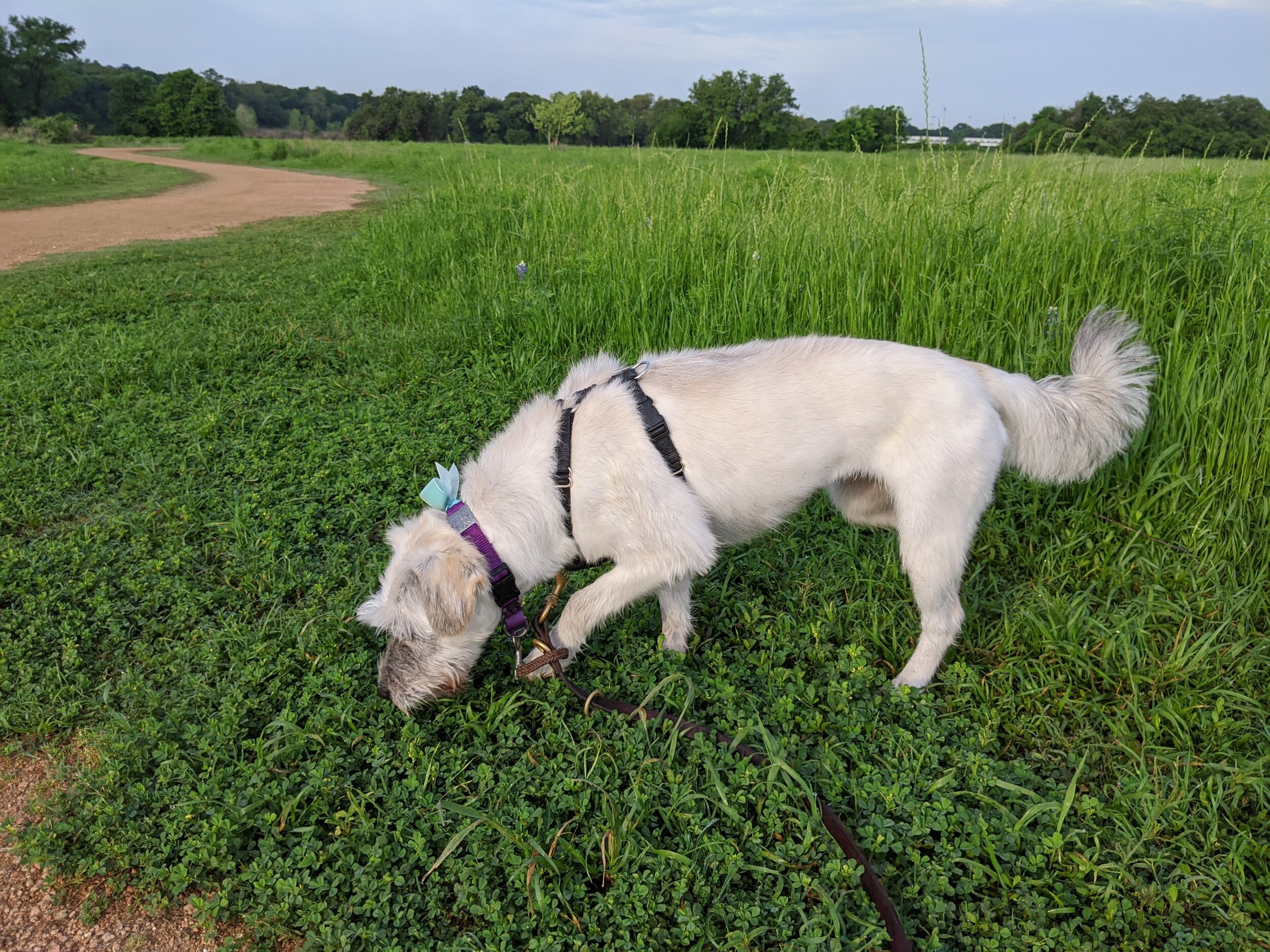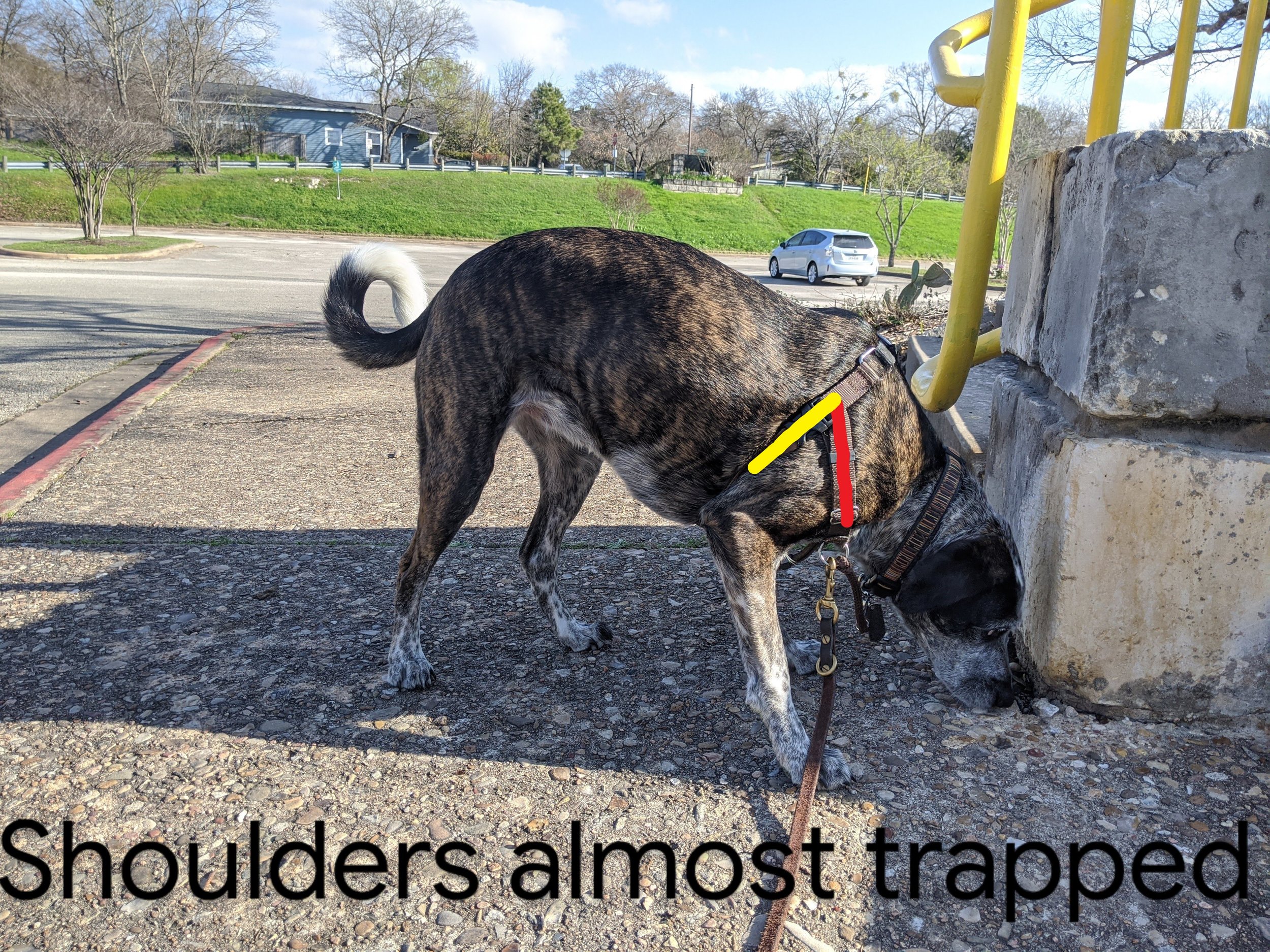How to Pick a Dog Harness
Avoiding collar pressure is something I believe in. Big time. In fact, it doesn’t matter how well trained the dog is, if I have to put him on leash, my first choice is a harness.
However, not all harnesses are created equal. Some will help you and your dog, and some will just make things worse for you both.
My favorite dog harness: Balance by Blue-9.
Runners Up:
Best for growing puppies:
What make these better than all the other options?
Leash Attachment Location
For most dogs, the best place for leash attachment is at the front—on the chest. Clipping the leash here takes some of the ‘oomph’ out of any pulling, whereas clipping to the back or shoulder-blade area gives the dog all the advantage. Clipping to the front won’t eliminate pulling, but it gives you the control you need to stop accidentally rewarding the pulling.
Once your dog is thoroughly trained not to pull, leash attachment location is less important.
No Shoulder Strap
Some harnesses restrict the dog’s range of motion due to strap placement. Compare these two photos.
This harness does not interfere with the puppy’s shoulders (marked in blue). He can fully extend his legs.
The strap marked in red cuts across Stella’s shoulders so she can’t stride freely.
Sizing
Just to state the obvious, the harness needs to fit correctly: two fingers stacked on top of each other between your dog’s body and the harness. If you can fit your whole hand or fist through, it’s too big and your dog might slip out. All of my recommended harnesses offer multiple points of adjustability to help get the best fit. Safety first!
Easy Dressing
The harness design should make dressing your dog easy and low-stress. H and Y-style harnesses (like those linked above) are pretty easy to put on even the squirmiest puppies. Step-in style harnesses are very popular, and VERY difficult to put on the dog; they require a lot of invasive man-handling.
Neck Buckle (optional)
One of the reasons the Balance harness is my favorite is because it’s one of very few harnesses that include a buckle for the neck opening. If your dog is nervous about things going over his head, OR has a larger head than neck, look for a harness with a buckle on the neck strap so that piece can be put on like a collar.
BONUS! Tip
To keep your dog still enough to measure for a harness, smear a little peanut butter or plain cream cheese on the dishwasher and let him lick while you measure. Make sure your peanut butter is xylitol free!
For tips on how to stop your dog from pulling on the leash, check out my other blog post on that topic.



